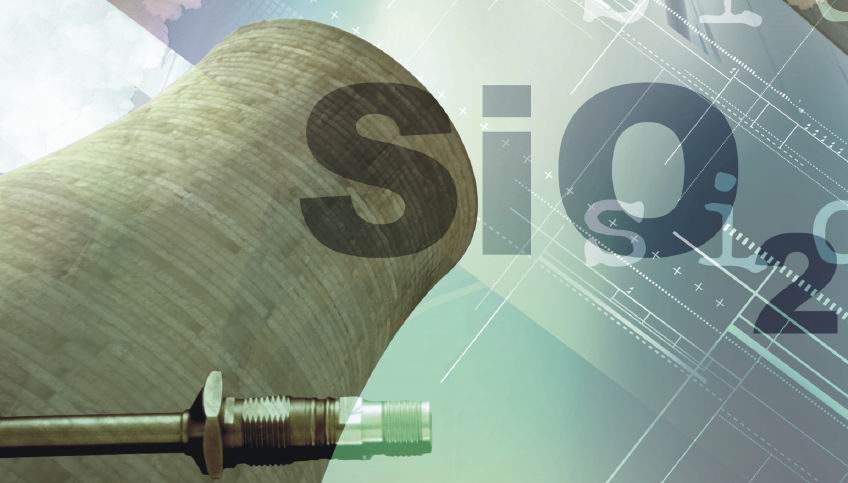超高温低损耗二氧化硅陶瓷绝缘射频同轴电
超高温漆包线,微细耐火线,超高温电磁绕
美国原子能管理委员会(NRC)-公告97-45 补充通知

原文链接:http://www.nrc.gov/reading-rm/doc-collections/gen-comm/info-notices/1997/in97045s1.html
简介:
美国原子能管理委员会(NRC)公告97-45S1,对同样使用了 Rockbestos公司的RSS-6-104/LE有机塑料同轴电缆和Amphenol公司的N型连接器的电缆组件,因为存在温度诱导现象,从而在远程辐射监控(HRRM)中产生了错误的信号,这个错误的信号会使操作人员对辐射监控指标产生误导,时间大约有15分钟,改用二氧化硅电缆后,错误的数值从几千R/hr降到100R/hr以下,错误值大为下降,但仍未完全解决该问题,需要对操作人员进行培训来解决。
UNITED STATES
NUCLEAR REGULATORY COMMISSION
OFFICE OF NUCLEAR REACTOR REGULATION
WASHINGTON, D.C. 20555-0001
February 17, 1998
NRC INFORMATION NOTICE 97-45, SUPPLEMENT 1: ENVIRONMENTAL QUALIFICATION DEFICIENCY FOR CABLES AND CONTAINMENT PENETRATION PIGTAILS
Addressees
All holders of operating licenses for nuclear power reactors except those licensees who have permanently ceased operations and have certified that the fuel has been permanently removed from the reactor vessel.
Purpose
The U.S. Nuclear Regulatory Commission (NRC) is issuing a Supplement to Information Notice (IN) 97-45 to alert the licensees of erratic indications from high-range radiation monitors (HRRMs) as result of a problem with their associated coaxial cables. It is expected that recipients will review the information for applicability to their facilities and consider actions, as appropriate, to avoid similar problems. However, suggestions contained in this information notice are not NRC requirements; therefore, no specific action or written response to this notice is required.
Description of CircumstancesIN 97-45 addressed issues relating to a potential environmental qualification (EQ) deficiency for cables and containment penetration pigtails for HRRMs. After IN-45 was issued, the staff became aware of an additional issue that could result in misleading the operators in assessing the radiation levels in the containment during an accident scenario. This issue was identified as a temperature-induced phenomenon.
During a periodic test of the containment emergency coolers at the San Onofre Nuclear Generating Station (SONGS), Unit 3, the HRRM indicated a "fail" alarm for periods of up to 15?minutes. After completion of the cooler test, an upscale reading of approximately 1 R/hr occurred, decaying back to zero in about 15 minutes. Southern California Edison Company's (SCE's) follow up provided more detailed information and evaluation on the transient response of all channels of the HRRM under postulated accident conditions. The licensee documented the transient response evaluation and EQ testing results in two internal memorandums that were provided to the NRC in an SCE letter (Accession No. 9708250123) dated August 20, 1997. In one of these memorandums, the licensee concluded that Rockbestos RSS-6-104/LE coaxial cable used previously with the SONGS Units 2 and 3 HRRMs would undergo significant positive and negative current flow when exposed to transient temperature conditions. The induced current is the result of temperature stress, specifically the rate of temperature change. Another conclusion was that the detector "keep alive" signal of 1R/hr would provide a false high radiation reading, for approximately 15 minutes, when exposed to extreme temperature transient conditions inside containment, such as those postulated during a loss-of-coolant accident (LOCA) or a main steamline break (MSLB). The magnitude of the false reading may be in the range of the low thousands of R/hr. The low thousands of R/hr indication spike would last less than 1 minute, drop down to hundreds of R/hr, then return to below the alarm setpoint (less than 10 R/hr) in approximately 15 minutes.
DiscussionThe licensee concluded from EQ testing that the magnitude and direction of the spurious signal is a function of the temperature gradient across the cable insulation. When the cable is heated, the induced current signal is positive and when the cable is cooled, the induced current signal is negative. A negative current signal could cause the HRRM to alarm "fail." Consequently, when the cable begins to cool following the initial accident temperature transient, the effect on the HRRM system could be to indicate a false fail signal in the control room if the cooling transient induces a current of sufficient magnitude to overcome the "keep alive" and/or detector dose rate signal.
A comparison of steam environment test results for 250-foot coaxial cable lengths indicated that cable routed completely in conduit does not provide relief from thermally induced currents. The test specimens routed completely in conduit demonstrated a time delay of approximately 60?seconds. The cable samples completely in conduit and partially in conduit experienced spurious signals of equal magnitude that ranged up to thousands of R/hr.
The results of the testing program performed for the temperature-induced signal phenomena demonstrated that both false high and fail indications could mislead the operators during LOCA and MSLB environmental conditions inside containment. The licensee made the following conclusions from the Wyle Laboratory test results:
(1) The duration of the spurious signal would be approximately 15 minutes and may range into thousands of R/hr
(2) The spurious high R/hr signal would return to normal, and, as the containment environment cools, a spurious fail signal may also occur as the thermally induced signal changes from positive to negative, thereby masking any actual low-level dose rate.
(3) When accident temperature conditions stabilize and/or a significant dose rate exists, indicated radiation dose rates would be more accurate.
Operators could be misled in the required actions during an accident scenario if they are not sensitized to the potential spurious signals from HRRMs. As previously reported IN 97-45, SCE replaced the Rockbestos coaxial cables with stainless steel jacketed mineral-insulated (MI) cables. SCE concluded that the MI?cables are not significantly sensitive to thermal transients, moisture intrusion, or sudden air flow across the cable. SCE believes that the stainless steel jacketed MI cable is of a more robust design and will provide a significantly more stable signal than the previously installed Rockbestos RSS-6-104/LE coaxial cable during LOCA environmental conditions. However, the MI cable does not completely eliminate the temperature-induced signal phenomena in that erroneous signals up to 100 R/hr could exist during severe temperature transients. SCE revised its operator training to ensure that operators were aware of the MI cable response for this phenomena.
This information notice requires no specific action or written response. If you have any questions about the information notice, please contact one of the technical contacts listed below or the appropriate Office of Nuclear Reactor Regulation (NRR) project manager.
/s/'d by
Jack W. Roe, Acting DirectorDivision of Reactor Program ManagementOffice of Nuclear Reactor Regulation
Technical Duc T. Nguyen, NRR
contacts:301-415-3202E-mail: dtn1@nrc.gov
Frank S. Ashe, NRR301-415-2785E-mail: fsa@nrc.gov